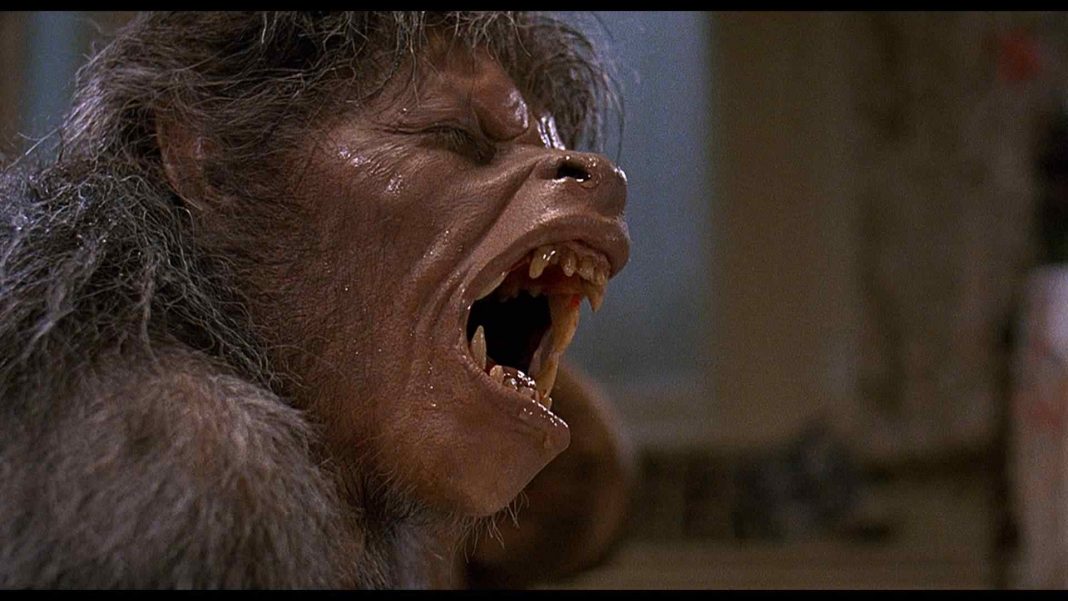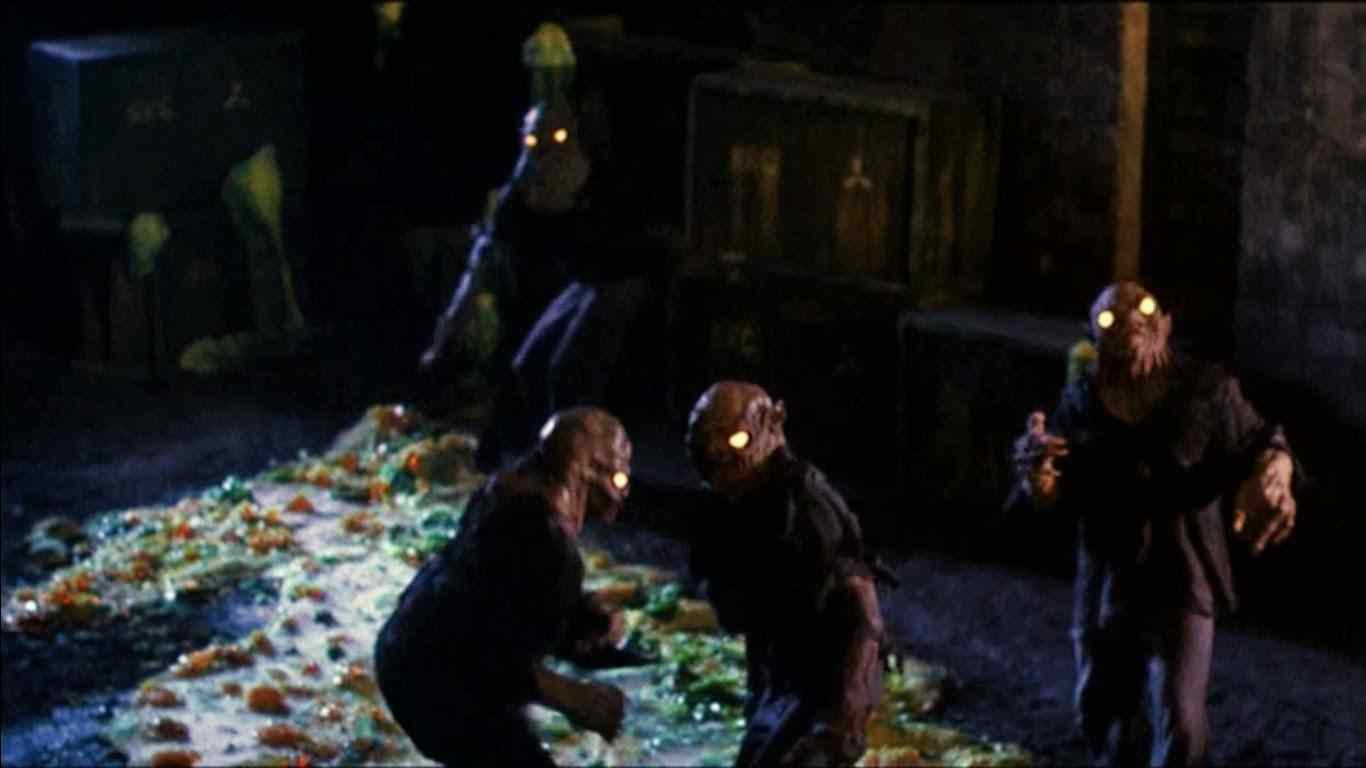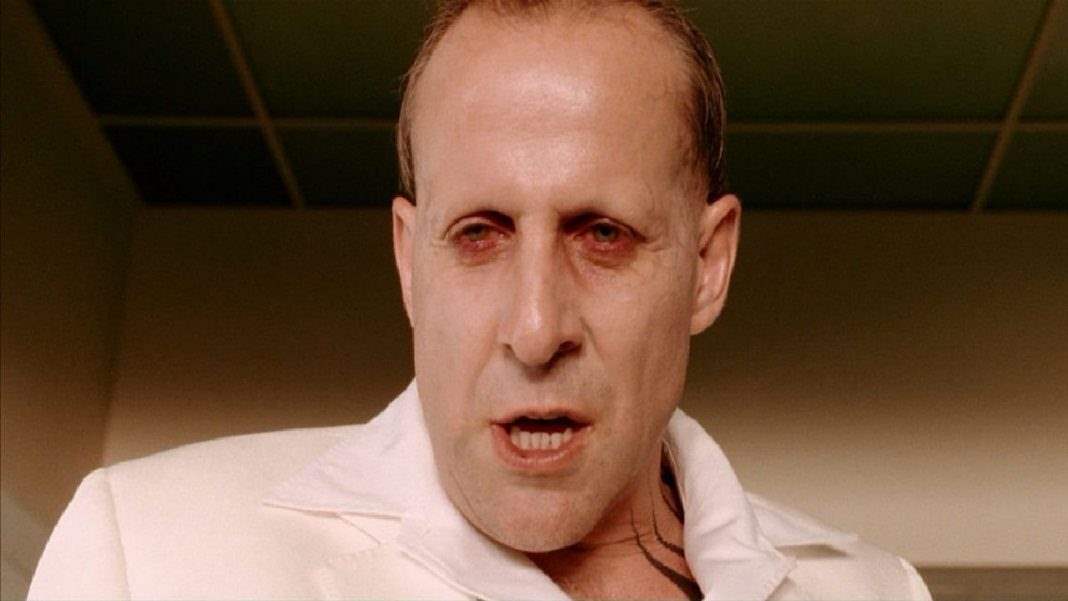Directed by Anthony Hickox, Waxwork is not a remake of the Vincent Price House of Wax film, but an imaginative and slightly campy tale about a wax museum in which stepping into a particular exhibit (all of which are based on some kind of movie monster) means entering the world of that particular character. The owner of the waxwork, Mr. Lincoln (David Warner, chewing the scenery to an extremely entertaining degree) is attempting to return all the creatures represented within the waxwork to flesh and blood. But to do that he will need six more souls. Enter Mark Loftmore (Zach Galligan, of Gremlins) and his friends.
Although one might normally expect another “victims dipped in wax” flick in the tradition of House of Wax, the fantasy inversion of the concept here is a fun and very inventive twist. The early portions of the picture play out almost like an anthology. As each person steps into the exhibit and into that world, they’re entering into a fairly self contained story, starting when they step inside and ending when they die.
The concept is not necessarily abandoned as the film progresses, but it is definitely not presented in an entirely straightforward fashion towards the end. Things get particularly interesting when Mark is leaping between worlds, each of which begins to take on a life of its own. For the most part, these scenes involving recreations of the classic monsters and their environments are respectful to their gothic origins while at the same time being a bit campier. In that respect, they are almost a cross between the Universal and Hammer monster movies of yesteryear.
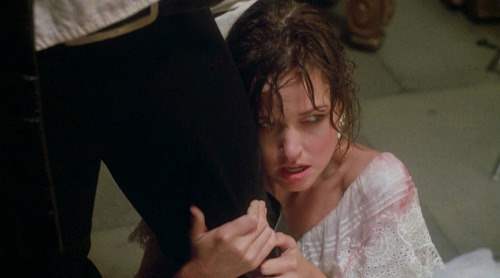
Generally a horror film with a more fantasy-based premise will shy away from gore, but Waxwork has no interest in doing that. Decapitations and eviscerations abound, as well as a very inventive use of a wine rack, and Keen handles these sequences just as well as the monsters. For such an FX-heavy production, it’s impressive to see that everything from the werewolves down to the man-eating plants appear to be handled with equal care.
Where Waxwork gets really interesting, though, is in the characterization of its heroine, Sarah (played by Deborah Foreman). She is in a lot of ways the typical repressed virgin. At first glimpse she’s almost a stock character. But Hickox uses her to explore that very character type and what it means. She plays to that repression, what it really means, and what hidden desires might be lurking just underneath it.
Most of the characters see something in a particular exhibit in the waxwork that lures them into the world of that monster. The sex-driven China is captivated by the Count, even as a wax figure, and so she steps in to get a better look. Yet with Sarah, it’s not a classic literary monster that captures her attention, but a monster of historical significance.
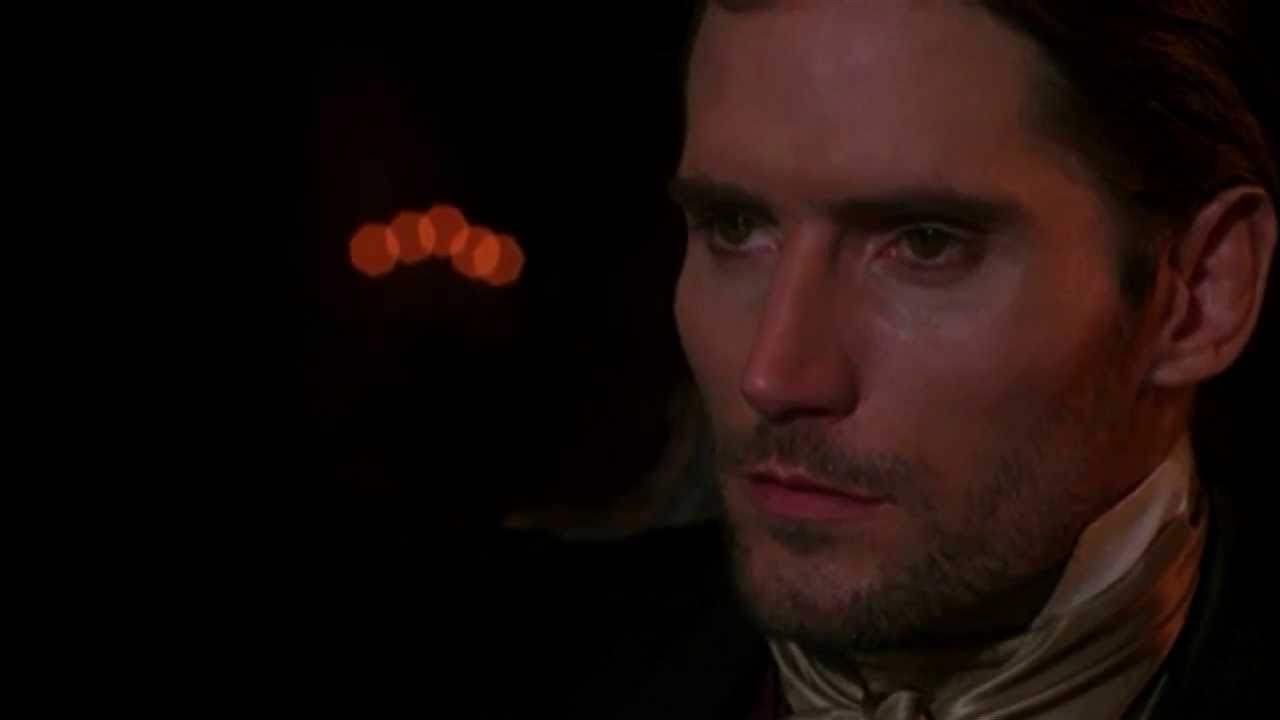 Sarah is completely taken, even smitten, with the Marquis de Sade. He was famous for sexual liberation so extreme that it frequently resulted in death. He’s the face of pleasure and pain intertwined, in fact, he’s where the term sadism originated from. He represents everything that Sarah keeps deep down, every urge she won’t let herself feel. When it comes to a head, she’s on her knees with de Sade announcing that he is going to whip her to death, and Sarah is begging him to do it.
Sarah is completely taken, even smitten, with the Marquis de Sade. He was famous for sexual liberation so extreme that it frequently resulted in death. He’s the face of pleasure and pain intertwined, in fact, he’s where the term sadism originated from. He represents everything that Sarah keeps deep down, every urge she won’t let herself feel. When it comes to a head, she’s on her knees with de Sade announcing that he is going to whip her to death, and Sarah is begging him to do it.
When Mark appears to save her, she does not want to be saved and refuses to even try and remember who Mark is, at least for a moment. That’s what’s fascinating. She’s trapped in a fantasy, not a nightmare, even if it’s self-destructive. And she doesn’t want that fantasy ruined for her. In all likelihood, it was probably this aspect of the film and the inclusion of de Sade that got Hickox the job directing Hellraiser III.
The film pads on mythology as it builds to its conclusion, with Mark visiting Sir Wilfred (Patrick Macnee) who tells Mark that his grandfather devoted his life to keep this very thing (wax figures running amok and taking over the world, apparently) from happening. He failed, and it’s now up to Mark to stop Lincoln from unleashing a Madame Tussauds apocalypse.
The finale is great, though, bringing everything together in a surprisingly explosive climax for such a low budget movie. All the wax monsters come to life, emerge from their exhibits and begin to attack what’s left of our heroes, but the primary focus is on a sword fight between Mark and the Marquis de Sade.
The movie ends with something that viewers must have taken as a cliffhanger because Waxwork spawned a sequel, Waxwork II: Lost in Time, again directed by Anthony Hickox. It did very little to recapture the charm of this film though. Waxwork is one of the better low budget outputs of the late 1980’s. It’s as smart as it is gruesome, as funny as it is scary, it’s classy and campy in equal doses. Zach Galligan and Deborah Foreman both do good work as square-jawed hero and virginal heroine, but Patrick Macnee and David Warner in particular steal the show.
While Waxwork has earned a bit of a reputation as a cult classic, it’s fan base is still definitely small, which is unfortunate. This is a late-80’s gem that not enough people latched onto. It might not be widely considered a classic, but the tagline promises “more fun than a barrel of mummies” and that’s precisely what it is.
The movie can currently be found on an 8-pack DVD with films like Ghoulies go to College and C.H.U.D. 2. Be warned, though, that the version found on this DVD is the R-rated cut. The unrated version, which is the most common and was the version on the VHS, can be found on the double feature DVD with Waxwork II. Either way, Waxwork is definitely worth a second look.



